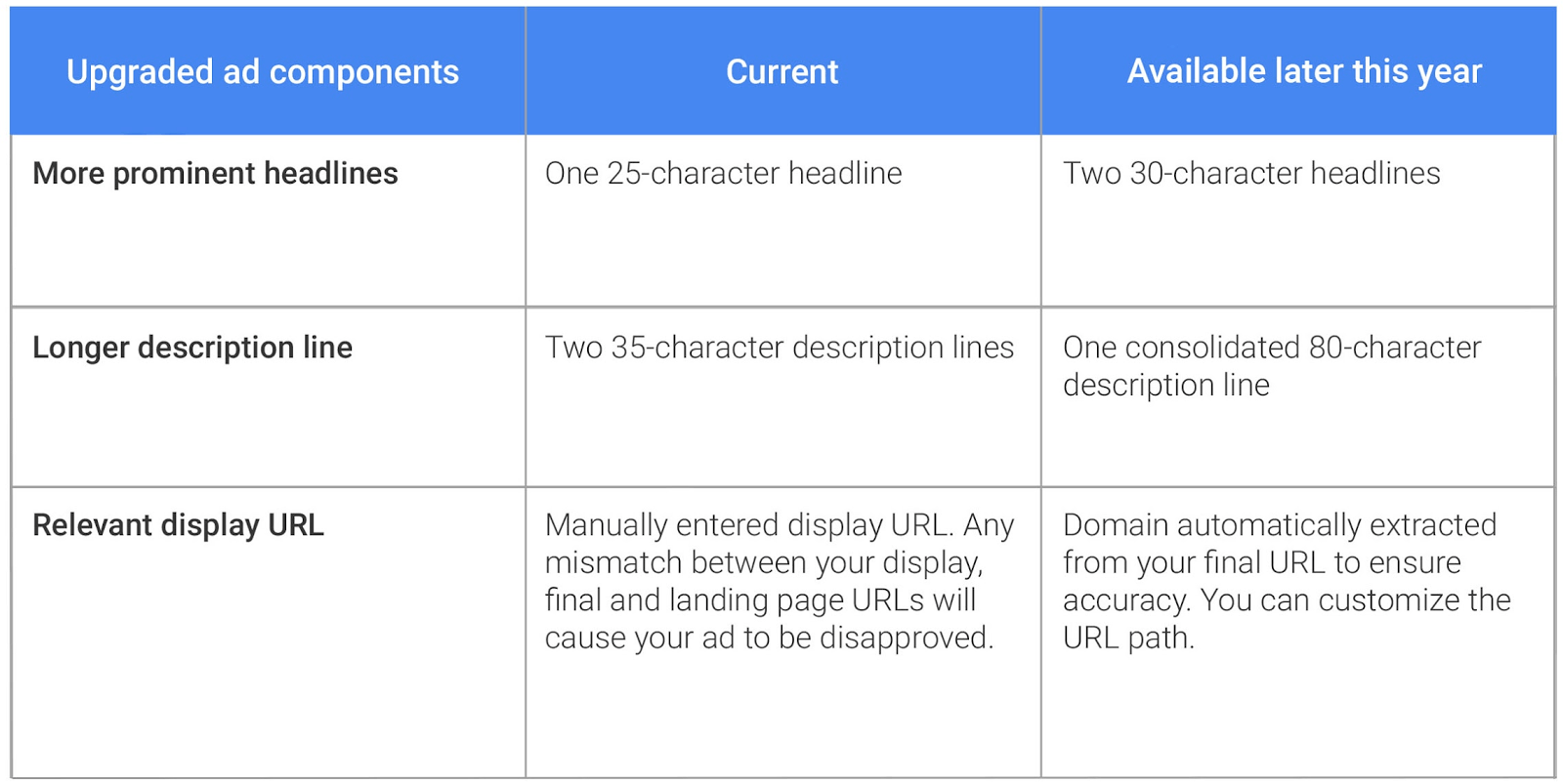Three Game-Changing Google Updates Marketers Need to Know About Now
 Google has had a busy year so far, rolling out updates and launching new products every month. From drastic SERP changes to new ad layouts, search marketers have been kept on their toes.
Google has had a busy year so far, rolling out updates and launching new products every month. From drastic SERP changes to new ad layouts, search marketers have been kept on their toes.
More recently, Google has introduced a slew of new ad formats, targeting capabilities and reporting for advertisers. Some are available now in beta phase, and others were announced at the May IO summit for future release. Here are the big three products search marketers should be prepared for, and how to take advantage of them.
I. EXPANDED TEXT ADS (Rolling out to select advertisers now, fully available by end of year)
Google is making a huge change by increasing the character limits for the headlines and descriptions in text ads. The ads will look uniform across all devices, and are aimed to give consumers as much information as possible before they click.
Many advertisers are already quoting traffic increases and CTR lifts up to 20% by leveraging expanded text ads. As such, all paid search marketers should be leveraging this new ad format, or at least getting a head-start on writing new creative for expanded ads if they are not available in the accounts yet.
Some tips for utilizing these ad formats:
- Coordinate the messaging with what you already have in Callouts or Sitelinks, in order to not be redundant.
- With a longer ad unit, users will get lost with run-on sentences. Be sure to have at least 2-3 sentences within the ad, use enticing creative with a clear call to action, and incorporate characters such as an exclamation point or trademark symbol to capture consumer attention.
- Continue to use standard text ads in your ad groups, not only to get a clean read on results but also because Google will initially not be serving the expanded ad formats 100% of the time.
Below are the updated specs for Expanded Text ads, compared to what is currently offered (per Google AdWords):

II. DEVICE-LEVEL BID ADJUSTMENTS (Rolling out to all advertisers later this year)
In a step forward that search marketers are very excited about, Google is reversing its decision to group desktop/tablet bidding, and will allow advertisers to set individual bid adjustments at the mobile, tablet and desktop levels. Additionally, advertisers will now be able to adjust bid multipliers from -100% to +900% for all devices (currently the range is -100% to +300% for mobile devices).
Why the change, you might ask? Google initially rolled out Enhanced Campaigns in 2013, coupling desktop/tablet bids and putting a mobile bid modifier in place (rather than allowing advertisers to easily opt out of mobile traffic with a campaign setting). This was designed to make it easier for advertisers to apply mobile-specific bid strategies, and allowed them to dip their toes in while controlling spend through the bid adjustments. Now that advertisers are more comfortable with spending on mobile, have a lot more data on performance between the three devices, and want more flexibility with bid strategies, Google is responding to these needs with more granular device options.
How to prepare for this upcoming change:
- Measure the device-level performance across all campaigns and come up with at least a broad strategy on how your desktop/tablet/mobile approach will look, focusing first on ROI performance, and also where you may see better CPC. Remember that even though you cannot currently bid on tablet, the data is in AdWords, so you can at least compare CPC’s and CTR across all devices.
- Make sure your search management platform is preparing to support these new bid adjustments. Kenshoo, Marin and DoubleClick Search will likely be ahead of the game to ensure that the settings are in place shortly after it is rolled out in AdWords.
III. SIMILAR AUDIENCES FOR SEARCH (Currently in beta release)
Anyone currently using remarketing lists for search ads will be excited for this new opportunity to expand their reach for remarketing campaigns. Similar Audiences has been available in the Google Display Network for years, and now Google is expanding this feature for targeting across search. To create the lists, Google uses an existing RLSA (Remarketing List for Search Ads) list to create a lookalike list of prospects, basing the lists on users that have similar search query behavior as those within the existing RLSA list.
Google has recently given some stats around this feature that have shown strong incremental reach for existing advertisers in the beta rollout , e.g. “2-3x increased impression reach and 30% more active users.”
Some considerations and ways to activate Similar Audiences for Search:
- Easy implementation: Similar Audiences are automatically created in any customer ID that is part of this beta release. There is no additional pixel or implementation work needed.
- Since the logic to create Similar Audiences for Search is based on query behavior, performance will likely vary from the original lists. This may not be a fit for advertisers that are implementing a “retargeting” type approach where there needs to be confidence that the user hit the advertiser’s website.
While Google is sure to keep the updates coming, these are the products that we at BCM are most excited about right now. It might still be early before all advertisers gain access to some of these features, but smart marketers will get ahead of the game to prepare their strategies in the coming weeks.

Viagra
Posted at 16:50h, 30 AugustZithromax Z Pak 250 Mg